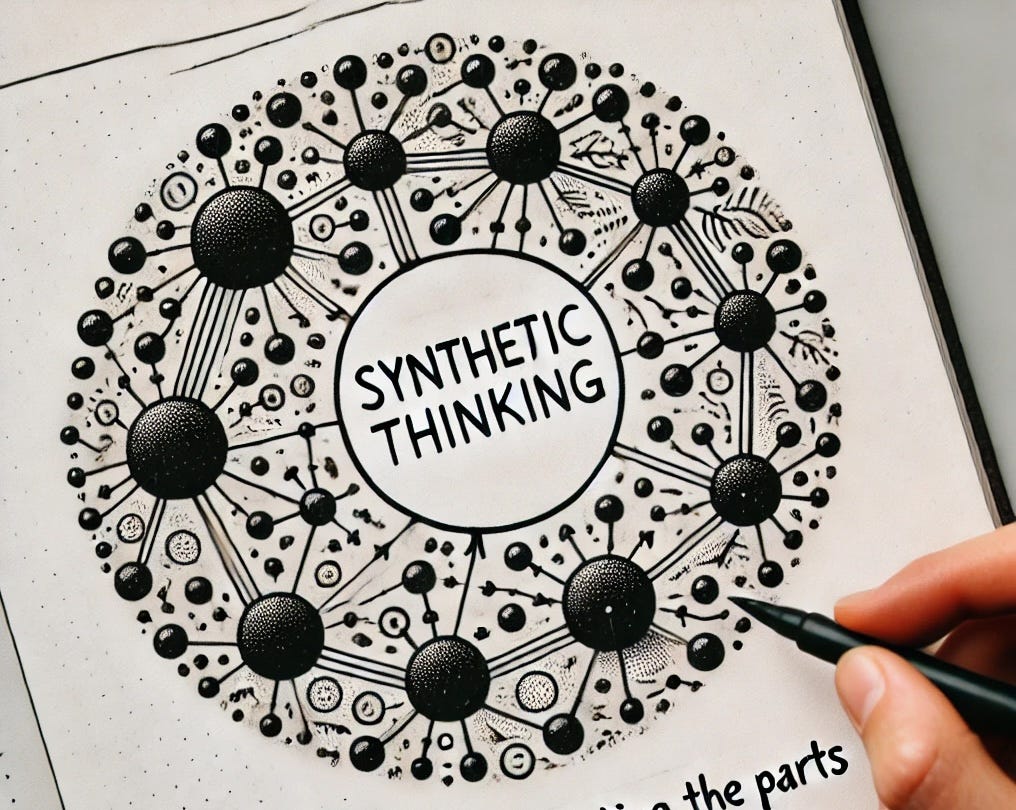Systems Thinking
Personal notes to formulate a minimal knowledge base
What is a system?
A system is a whole that when divided loses all its essential properties
This means that:
a system (the whole) has essential properties that none of its parts has
broken into parts, a system loses all its essential properties
These considerations have a valuable implication:
A system cannot be understood only through analysis, because analysis requires breaking the system apart in order to understand each element separately.
Analysis is necessary but not sufficient in creating a comprehensive understanding of the system. Understanding each part working does not explain how the whole operates together. The same way knowing how a car works does not make you capable of driving it.
The aggregation of parts back together is called Synthetic Thinking: it defines HOW the parts interact with each other inside the system.
But…
It only explains how, NOT WHY the system works that way.
Russell Ackoff tells us that the WHY a system is that way is almost never inside the system but it can be found in the environment where the system operates in.
His example was: consider cars for the UK market with the steering wheel on the right side. If you take the car apart you won’t figure out why it is on the right. In order to know why, one has to understand where the car (system) operates in and political and legal rules that govern it.
To summarise:
ANALYSIS brings KNOWLEDGE but not understanding.
SYNTHETIC THINKING brings UNDERSTANDING.
Now combining the two and considering the environment the system and us live in, we can obtain a broader perspective, bigger than the one provided by the simple sum of the parts considered separately. 1
ANALYSIS + SYNTHETIC THINKING + WHY2 = SYSTEMS THINKING + LO3
What do we obtain?
An understanding of how the system operates as a whole. The holistic view.
Disclaimer: it’s a conceptual representation, not an empirical one. There may be additional factors not yet considered. However, it should be enough to give an idea of the relationship between the analysis part and the synthetic thinking to formulate a system view.
We should always know our why. The business goal of the company one works for is a good starting point.
What is needed for systems thinking to thrive in an organization?
Apparently a lot. That is represented by the activities and resources of a Learning Organization (LO). Will clarify the concept in a future post.



